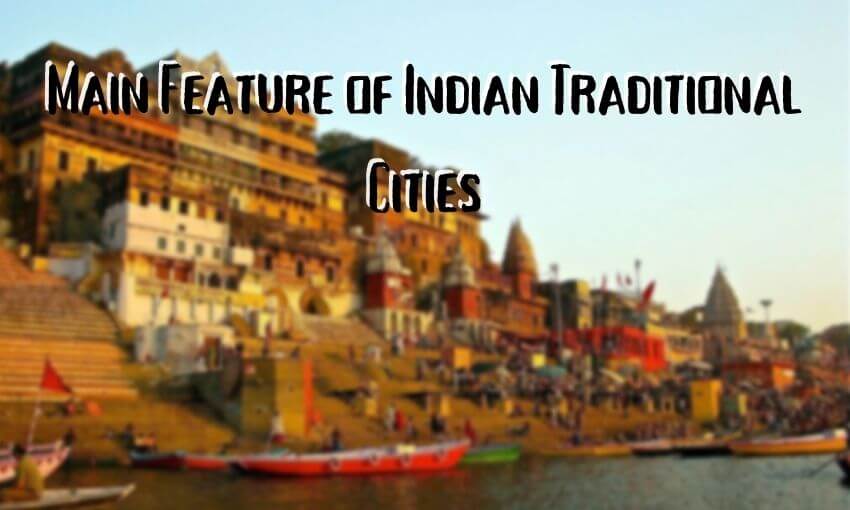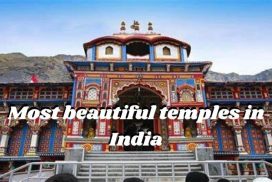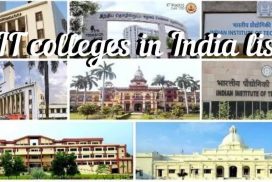Indian traditional cities were characterized by their unique architecture, culture, and lifestyle. These cities were built with a focus on sustainability, with an emphasis on the use of natural resources and the preservation of the environment. The cities were designed to be self-sufficient, with a variety of services and amenities available to the citizens. The cities were also designed to be aesthetically pleasing, with a variety of architectural styles and designs. The traditional cities of India were also known for their vibrant culture and religious practices, with a variety of festivals and celebrations taking place throughout the year.

Investigating the Role of Social Hierarchy in Indian Traditional Cities
India is a country with a long and rich history, and its traditional cities are a testament to this. These cities have been shaped by centuries of social hierarchy, and it is interesting to explore how this has impacted their development.
Social hierarchy has been a major factor in the development of Indian traditional cities. In many of these cities, the upper classes have been able to secure the best land and resources, while the lower classes have been relegated to the outskirts. This has resulted in a stark divide between the wealthy and the poor, with the wealthy having access to better housing, education, and other resources.
The social hierarchy has also had an impact on the architecture of these cities. In many cases, the upper classes have been able to build large and impressive homes, while the lower classes have been relegated to smaller and less impressive dwellings. This has resulted in a stark contrast between the two classes, with the wealthy having access to more luxurious homes and the poor having to make do with less.
The social hierarchy has also had an impact on the way these cities are governed. In many cases, the upper classes have been able to secure positions of power and influence, while the lower classes have been left out of the decision-making process. This has resulted in a system where the wealthy have been able to shape the city to their own benefit, while the poor have been left out in the cold.
Finally, the social hierarchy has had an impact on the culture of these cities. In many cases, the upper classes have been able to impose their own values and beliefs on the lower classes, resulting in a culture that is heavily influenced by the wealthy. This has resulted in a culture that is often seen as oppressive and unfair to the lower classes.
Overall, it is clear that social hierarchy has played a major role in the development of Indian traditional cities. The wealthy have been able to secure the best land and resources, while the poor have been relegated to the outskirts. This has resulted in a stark divide between the two classes, with the wealthy having access to better housing, education, and other resources. It has also had an impact on the architecture of these cities, the way they are governed, and the culture of these cities.
Analyzing the Role of Water Management in Indian Traditional Cities
Water management has always been an important part of Indian traditional cities. From ancient times, Indian cities have been designed to make the most of the available water resources. This has been done through a variety of methods, such as the construction of tanks, wells, and canals, as well as the use of rainwater harvesting techniques.
The most common form of water management in Indian traditional cities is the construction of tanks. These tanks are usually built in the center of the city and are used to store and distribute water. They are also used to collect rainwater, which is then used for irrigation and other purposes. In addition, these tanks are also used to provide water for drinking and bathing.
Another important form of water management in Indian traditional cities is the use of wells. Wells are dug deep into the ground and are used to collect groundwater. This groundwater is then used for drinking, bathing, and irrigation. Wells are also used to provide water for livestock and other animals.
Rainwater harvesting is another important form of water management in Indian traditional cities. This involves collecting rainwater from rooftops and other surfaces and storing it in tanks or wells. This water can then be used for drinking, bathing, and irrigation.
Finally, canals are also used for water management in Indian traditional cities. Canals are used to transport water from one place to another. They are also used to irrigate fields and provide water for livestock.
Water management is an important part of Indian traditional cities. Through the use of tanks, wells, canals, and rainwater harvesting, these cities have been able to make the most of their available water resources. This has allowed them to thrive and remain prosperous for centuries.
Investigating the Role of Trade in Indian Traditional Cities
Trade has always been an integral part of Indian traditional cities. From the bustling bazaars of Delhi to the spice markets of Kochi, trade has been a major source of livelihood for many people in India. But what role does trade play in these cities? How has it shaped their development and culture?
To answer these questions, we must first look at the history of trade in India. Trade has been a part of Indian culture since ancient times. The Silk Road, which connected India to the Middle East and Europe, was a major source of trade for centuries. This allowed for the exchange of goods, ideas, and cultures between India and other parts of the world.
The development of Indian cities was also heavily influenced by trade. Many cities grew around trading hubs, such as ports and markets. These hubs provided a place for merchants to buy and sell goods, and for people to exchange ideas and cultures. This allowed cities to become more diverse and cosmopolitan.
Trade also had a major impact on the culture of Indian cities. Merchants brought goods from all over the world, which allowed for the exchange of ideas and cultures. This led to the development of unique cultural traditions, such as music, art, and cuisine.
Finally, trade has had a major impact on the economy of Indian cities. Trade has provided jobs for many people, and has allowed cities to become more prosperous. This has allowed cities to develop infrastructure, such as roads, bridges, and buildings.
In conclusion, trade has played a major role in the development of Indian traditional cities. It has shaped their culture, economy, and development. Trade has allowed cities to become more diverse and cosmopolitan, and has provided jobs for many people. It has also allowed cities to become more prosperous and develop infrastructure.
Examining the Role of Religion in Indian Traditional Cities
Religion has always been an integral part of Indian traditional cities. It is deeply embedded in the culture and lifestyle of the people living in these cities. From the ancient times, religion has been a major factor in the formation of the cities and their development.
Religion has been a major source of inspiration for the people living in these cities. It has provided them with a sense of purpose and direction in life. It has also been a source of comfort and solace in times of distress. People have looked to their religious beliefs and practices to provide them with guidance and strength in difficult times.
Religion has also been a major factor in the development of the cities. Many of the cities have been built around religious sites and monuments. These sites have been used as places of worship and pilgrimage for centuries. This has helped to create a sense of community and belonging among the people living in the city.
Religion has also been a major factor in the social and economic life of the cities. Many of the cities have been built around religious institutions such as temples, mosques, and churches. These institutions have provided the people with a place to gather and worship. They have also been a source of employment and economic activity.
Religion has also been a major factor in the political life of the cities. Many of the cities have been ruled by religious leaders or dynasties. This has helped to create a sense of unity and loyalty among the people living in the city.
In conclusion, religion has been a major factor in the formation and development of Indian traditional cities. It has provided the people with a sense of purpose and direction in life. It has also been a major factor in the social, economic, and political life of the cities.
Exploring the Ancient Architecture of Indian Traditional Cities
Exploring the ancient architecture of Indian traditional cities is a fascinating journey through time. From the grand forts of Rajasthan to the intricate temples of Tamil Nadu, India’s traditional cities are a treasure trove of architectural wonders.
The architecture of India’s traditional cities is a reflection of the country’s rich cultural heritage. From the grand forts of Rajasthan to the intricate temples of Tamil Nadu, each city has its own unique style of architecture. In Rajasthan, the forts are a testament to the power and wealth of the Rajput rulers. These imposing structures are built from sandstone and marble, and feature intricate carvings and designs. The temples of Tamil Nadu are equally impressive, with their ornate sculptures and intricate carvings.
The architecture of India’s traditional cities is also a reflection of the country’s religious beliefs. Hindu temples are a common sight in many cities, and are often adorned with intricate carvings and sculptures. The temples of Tamil Nadu are particularly impressive, with their ornate sculptures and intricate carvings.
The architecture of India’s traditional cities is also a reflection of the country’s climate. In the hot and humid climate of the south, buildings are often constructed with thick walls and high ceilings to keep the interior cool. In the cooler climates of the north, buildings are often constructed with large windows and balconies to let in the sunlight.
Exploring the ancient architecture of India’s traditional cities is a journey through time. From the grand forts of Rajasthan to the intricate temples of Tamil Nadu, each city has its own unique style of architecture. Whether you’re looking for a glimpse into the past or just want to admire the beauty of India’s traditional cities, there’s something for everyone.
Conclusion
The main feature of Indian traditional cities was their unique urban planning and architecture. These cities were designed to be self-sufficient and to provide a safe and comfortable living environment for their inhabitants. They featured a variety of public spaces, such as temples, markets, and parks, as well as a complex network of streets and alleyways. The cities also had a strong sense of community, with a variety of social and cultural activities taking place in the public spaces. This combination of urban planning, architecture, and community made Indian traditional cities unique and distinct from other cities around the world.
Content from other States:
- No items




